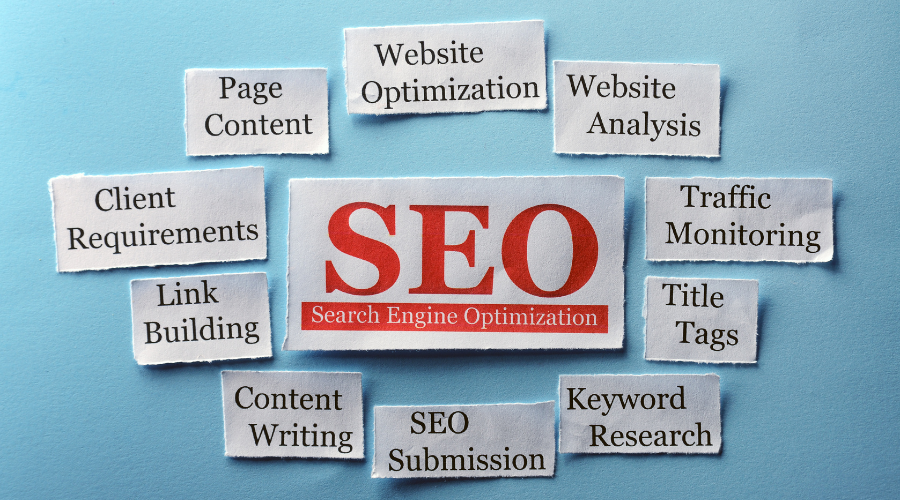Mastering On Page SEO Techniques for 2025
Introduction:
The SEO landscape is still changing quickly in 2025. While off-page factors like backlinks still play a significant role, mastering on page SEO has become just as critical—if not more so—for achieving top rankings on Google and other search engines.
If your content isn’t optimized correctly, even the best backlinks won’t help much. To keep ahead of the curve in 2025, this guide is your go-to source for comprehending and putting into practice the best on-page SEO strategies.
What is On Page SEO and Why Is It Important?
On page SEO refers to the practice of optimizing elements on a webpage—like content, HTML tags, and internal links—to improve that page’s visibility in search engines and its relevance to specific queries.
It’s important because:
- Search engines crawl individual pages to determine their relevance for given search queries.
- Well-structured on page optimization leads to better rankings, greater organic traffic, and improved engagement.
- It ensures your content is not just discoverable but also aligned with intent, which is critical to engagement and conversions.
As Google’s algorithms grow more sophisticated—with a stronger emphasis on user experience, content relevance, and engagement metrics—on page SEO has shifted from keyword-focused tactics to a more holistic content optimization strategy.
Related: https://liveyourbrand.in/18-seo-factors-to-be-considered-while-making-a-website/
Key On Page SEO Techniques for 2025
Here’s a step-by-step on page SEO checklist 2025 to ensure your pages are primed for performance and discoverability.
1. Prioritize Search Intent and Content Relevance
Giving users the most relevant results is Google’s main objective. It is therefore more crucial than ever to match your content with search intent.
- Understand the user’s goal: Are they looking for information (informational), making a purchase (transactional), or comparing options (commercial investigation)
- Use semantic SEO: Integrate related keywords and topics that support the main query.
- Avoid fluff: Focus on delivering substantial, useful content that directly answers the searcher’s query.
- Examine the pages that rank highly for your target keyword to find any gaps or areas that could use more attention.
Pro tip: Use Google’s “People also ask” and related searches to find subtopics and expand your content naturally.
2. Optimize Title Tags and Meta Descriptions
Meta tags are still essential for both SEO and user engagement.
- Title Tag:
- Should include your primary keyword (“on page SEO”) near the beginning.
- Keep it under 60 characters.
- Make it compelling enough to attract clicks.
- Meta Description:
- Summarize the content in 150–160 characters.
- Include a value proposition and a relevant keyword.
- Even if you’re not in the top spot, a strong meta description can raise your click-through rate.
3. Use Headers to Structure Content Clearly
When header tags are used correctly, your content is easier for search engines to comprehend and easier for users to read.
- Use a single H1 tag for the page title.
- Organize content with H2s for main sections and H3s for subsections.
- Naturally incorporate keywords into headings without keyword stuffing.
Clear structure improves accessibility, scanning behavior, and SEO performance.
4. Improve Time in View and Engagement
Time in view—how long users stay on your page—is becoming a valuable user experience metric that search engines consider.
To increase dwell time:
- Develop compelling introductions that grab the reader at once.
- Make use of short paragraphs, visual hierarchy, and white space to increase readability.
- Instruct visitors to visit further parts of your site by placing internal links to relevant materials.
- Use multimedia (photos, videos, interactive widgets) to enhance the user experience.
Pages that keep users engaged longer often outperform those with high bounce rates.
5. Internal Linking for Context and Crawling
Strategic internal linking is a powerful yet underutilized on page SEO technique.
- Link to relevant articles or services within your site.
- Use descriptive anchor text that includes secondary keywords when appropriate.
- Ensure that new content links back to older content and vice versa.
For example, if you’re a local business, linking to the best SEO company in Coimbatore from a related page can help search engines understand your site’s topical relevance and improve local rankings.
6. Make Mobile Optimization a Top Priority
Mobile-first indexing means Google evaluates your mobile site version to rank pages.
In 2025, mobile optimization includes:
- All screen sizes can be accommodated by responsive design.
- Fast load times—target under 2.5 seconds.
- Touch-friendly navigation with properly spaced clickable elements.
- Prioritizing core web vitals, especially LCP (Largest Contentful Paint), FID (First Input Delay), and CLS (Cumulative Layout Shift).
No matter how well your desktop version looks, if your mobile version is subpar, it will have trouble ranking.
7. Implement Schema Markup and Structured Data
Schema markup enhances your search listings by enabling rich snippets—which can improve click-through rates dramatically.
Popular schema types include:
- FAQ schema
- Article or blog post schema
- Review and rating schema
- Product and pricing schema
Use Google’s Rich Results Test to validate your structured data.
8. Optimize Images for SEO and Performance
Images aren’t just decorative—they can support your content and drive traffic through image search if optimized properly.
- Use descriptive filenames and include alt attributes with relevant keywords.
- Compress images to reduce page size and speed up load times.
- Choose modern file formats like WebP for better compression without quality loss.
- Include captions where necessary to provide additional context.
Every second of load time lost impacts both rankings and user engagement.
9. Use SEO-Friendly URLs
A clean and keyword-rich URL structure improves crawlability and user trust.
- Keep URLs short and descriptive (e.g., /on-page-seo-techniques-2025/).
- Avoid unnecessary parameters or numbers.
- Use hyphens to separate words (not underscores).
- Don’t change existing URLs unless absolutely necessary—and if you do, implement 301 redirects properly.
10. Outbound Linking to Authoritative Sources
Linking out to relevant, trustworthy sites shows that your content is well-researched and part of a broader information ecosystem.
- Link to studies, reports, or authoritative blogs.
- Use dofollow links when appropriate.
Be selective and only link where it adds real value.
On Page SEO in 2025: Best Practices to Follow
Users’ and search engines’ expectations have increased as the digital landscape continues to develop. Implement these SEO best practices to future-proof your content:
- Focus on topic clusters rather than individual keywords.
- Build E-E-A-T (Experience, Expertise, Authoritativeness, and Trustworthiness) through authorship, reviews, and content quality.
- Leverage AI tools for research and ideation—but always review and humanize AI-generated content.
- Keep testing and adapting. SEO is an ongoing process, not a one-time task.
Related: https://liveyourbrand.in/5-reasons-why-doing-seo-is-essential-for-your-business-in-2023/
Final Thoughts
On-page mastering In 2025, SEO will be more about giving your visitors meaningful, approachable, and interesting experiences than it will be about pleasing search engines.
You can increase your site’s usability, credibility, and conversion potential in addition to your search visibility by implementing the strategies described into practice.
Don’t treat SEO as a checklist to complete once and forget. Make it a continuous process of monitoring, testing, and refining.
Frequently Asked Questions (FAQs)
1. What is on page SEO and why is it important?
On page SEO is the process of optimizing elements within a webpage—such as titles, content, structure, and internal links—to improve its visibility in search engines. It matters because it has a direct impact on how well your content responds to a searcher’s query, which impacts your traffic and rankings.
2. What are the key on page SEO factors in 2025?
The most important factors include:
- Content quality and relevance
- Keyword placement
- Page speed and mobile optimization
- Internal linking
- Structured data
- Engagement metrics like time in view
- Clean URLs and appropriate header tag usage
3. How do I optimize meta tags for SEO?
Start with a compelling, keyword-rich title tag that’s under 60 characters. Then, craft a meta description (150–160 characters) that summarizes your content and encourages clicks. Use active language and highlight user benefits.
4. Is keyword density still important?
Not in the traditional sense. Google now prioritizes context and semantic relevance. Overusing keywords can harm your content’s readability and trustworthiness. Instead, focus on using keywords naturally and in context, and incorporate related terms.
5. How does mobile optimization affect on page SEO?
With Google’s mobile-first indexing, your site’s mobile version is the primary version that Google evaluates. Poor mobile experience—slow load times, unresponsive design, or cluttered layouts—can significantly hurt your rankings.











